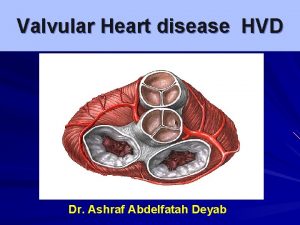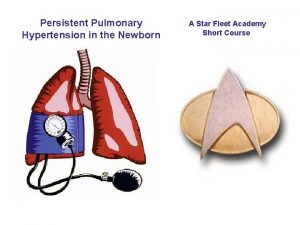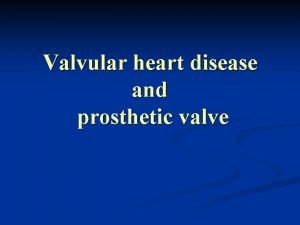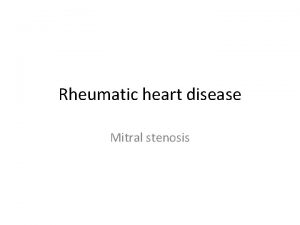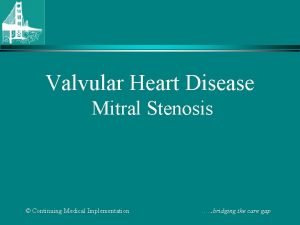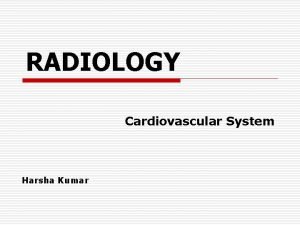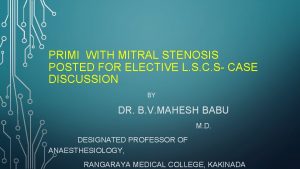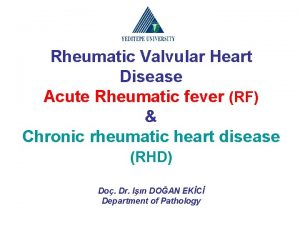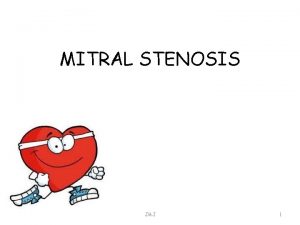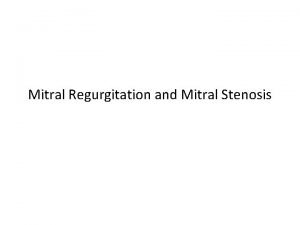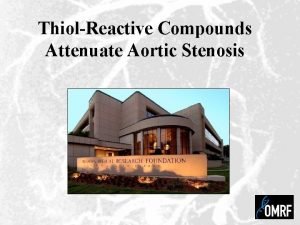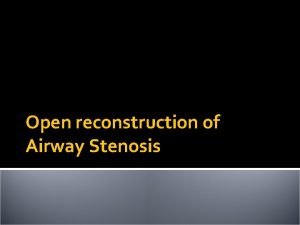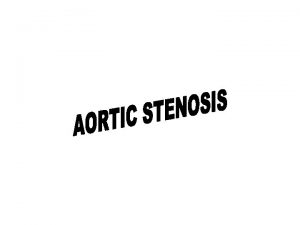ASE 2 Minute Tutorials MS ACQUIRED MITRAL STENOSIS












- Slides: 12

ASE 2 Minute Tutorials: MS ACQUIRED MITRAL STENOSIS IN THE ADULT

ASE 2 Minute Tutorials: MS Two main etiologies Rheumatic Leaflet thickening most pronounced at the tips, giving the characteristic “hockeystick” appearance. Commissural fusion. Calcific Severe calcification of the mitral annulus, extending into the leaflets. Typically seen in the elderly (“senile”). Rheumatic mitral stenosis, although uncommon, is more frequently the cause of mitral stenosis that is severe enough to require intervention. Mitral annular calcification is much more common, though it is less often severe enough to cause significant stenosis.

ASE 2 Minute Tutorials: MS Severity assessment Hemodynamic Anatomic - Mitral valve area (MVA) by: - Transmitral gradient (heart rate and flow dependent) *Planimetry (2 D and 3 D) - Pressure half time (PHT) *Continuity - Pulmonary artery systolic pressure (PASP) *PISA Classification - Severe, if MVA is ≤ 1. 5 cm 2 ; PHT ≥ 150 ms - Very severe, if MVA is ≤ 1. 0 cm 2 ; PHT ≥ 220 ms

ASE 2 Minute Tutorials: MS MVA by planimetry (2 D and 3 D) 3 D 2 D 3 D planimetry, whenever feasible, is more accurate than to 2 D planimetry, and is therefore the preferred methodology.

ASE 2 Minute Tutorials: MS MVA by continuity Principle The stroke volumes proximal and distal to the stenotic mitral valve must be equal. D Mitral inflow = Aortic outflow VTIAortic D= LVOT diameter VTI = Velocity time integral VTIMitral

ASE 2 Minute Tutorials: MS MVA by PISA Principle As flow accelerates towards the narrowed MV orifice, it forms hemispheric shells of increasing velocity and decreasing radius. Because of mitral leaflet doming and the funnel shaped inflow, an angle correction factor of â°/180° needs to be accounted for, with â being the angle between the 2 leaflets at the atrial side. â° MVA = 6. 28 r 2 x Aliasvel/Peak. MSvelocity x â°/180° r = PISA radius Aliasvel = Aliasing velocity Peak. MSvelocity = Peak MS velocity â° = angle between the 2 leaflets

ASE 2 Minute Tutorials: MS Transmitral gradient Principle The mean pressure gradient varies with heart rate and forward flow. However, usually*: <5 mm Hg – mild MS 5– 10 mm Hg – moderate MS >10 mm Hg – severe MS *at heart rates between 60 -80 bpm and in sinus rhythm.

ASE 2 Minute Tutorials: MS Pressure Half Time (PHT) Principle The PHT reflects the time taken for the transmitral pressure gradient to decay to half its value at the onset of diastole. There is a linear and inverse relationship between MVA and PHT: the more severe the MS, the longer the PHT Empirical formula to derive MVA from PHT: MVA = 220/PHT

ASE 2 Minute Tutorials: MS Estimated pulmonary pressure Principle The obstruction of flow at the mitral orifice results in pulmonary hypertension. The degree of pulmonary hypertension is a measure of the hemodynamic burden of MS. Elevated pulmonary artery systolic pressure (PASP) >30 mm Hg is typically seen in severe MS. PASP can be estimated by measuring the tricuspid regurgitant jet maximum velocity by continuous wave (CW) spectral Doppler. PASP = 4 (TR VMax)2 + RA pressure

ASE 2 Minute Tutorials: MS Exercise stress testing Principle Mitral stenosis is considered hemodynamically significant, if during exercise: - Pulmonary artery wedge pressure is greater than 25 mm Hg or, - Mean mitral valve gradient is greater than 15 mm Hg. Exercise Mean gradient of 9 mm. Hg at rest (HR of 72 bpm) Mean gradient of 19 mm. Hg with exercise (HR of 110 bpm)

ASE 2 Minute Tutorials: MS Intervention Types Indications - Mitral Valve Surgery. - PMBC: Percutaneous mitral balloon commissurotomy (typically performed under TEE guidance). Nishimura et. al. J Am Coll Cardiol. 2014; 63: e 57 -185

ASE 2 Minute Tutorials: MS • References Nishimura RA, Otto CM, Bonow RO, Carabello BA, Erwin JP, 3 rd, Guyton RA, O'Gara PT, Ruiz CE, Skubas NJ, Sorajja P, Sundt TM, 3 rd, Thomas JD. 2014 aha/acc guideline for the management of patients with valvular heart disease: A report of the american college of cardiology/american heart association task force on practice guidelines. J Am Coll Cardiol. 2014; 63: e 57 -185 https: //www. sciencedirect. com/science/article/pii/S 0735109714012790? via%3 Dihub • Baumgartner H, Hung J, Bermejo J, Chambers JB, Evangelista A, Griffin BP, Iung B, Otto CM, Pellikka PA, Quinones M. Echocardiographic assessment of valve stenosis: Eae/ase recommendations for clinical practice. J Am Soc Echocardiogr. 2009; 22: 1 -23 https: //www. asecho. org/wp-content/uploads/2014/05/2009_Echo-Assessment-of-Valve-Stenosis. pdf
